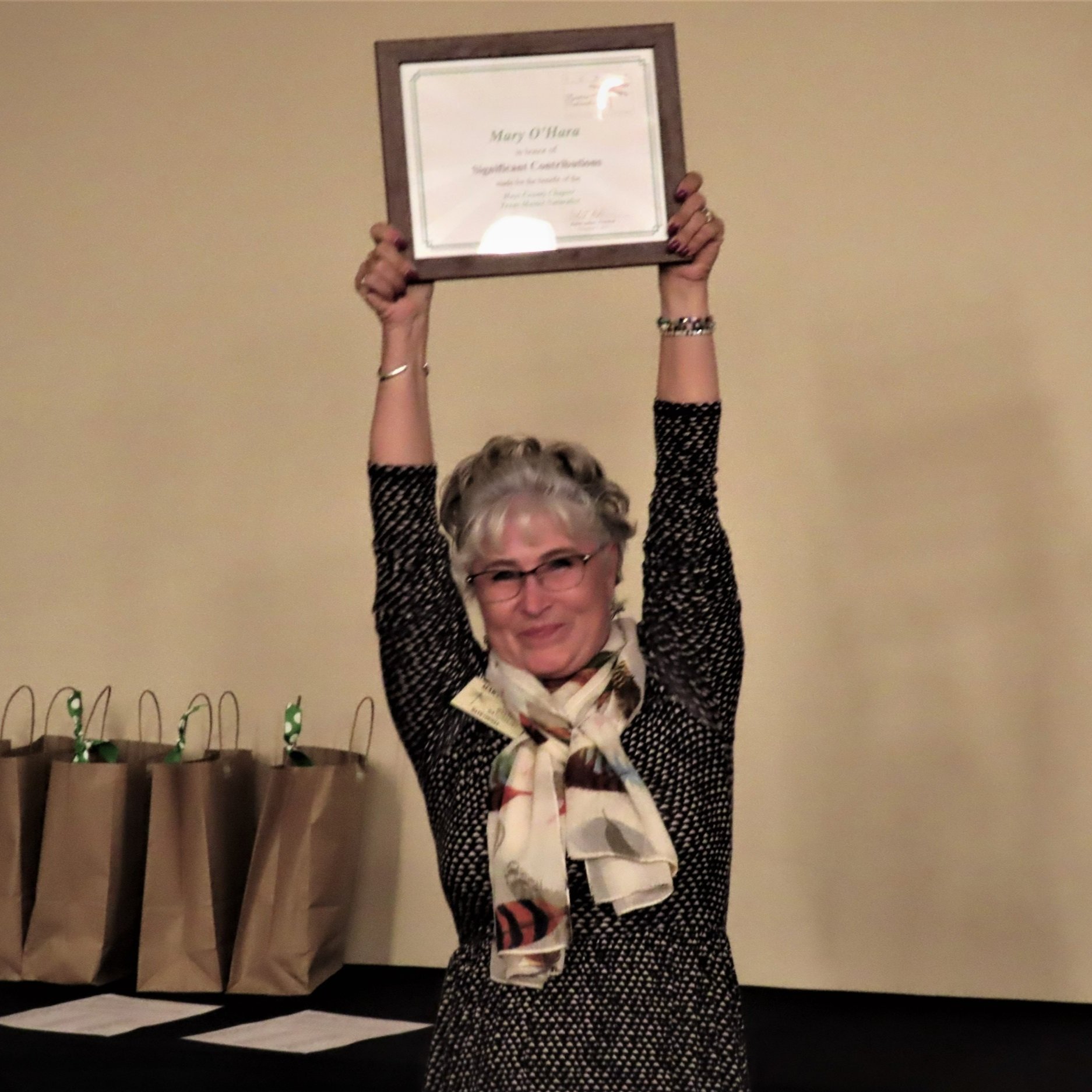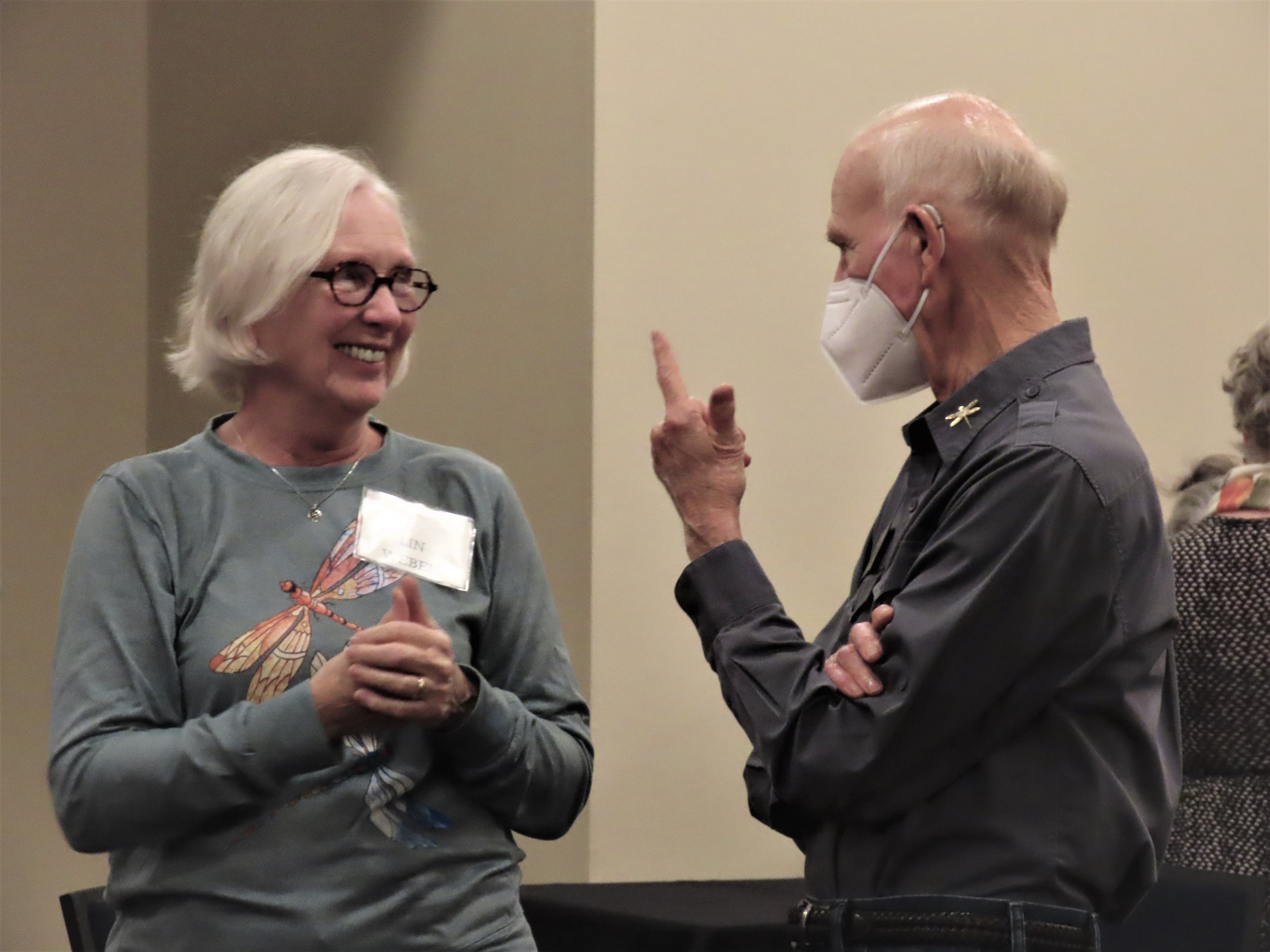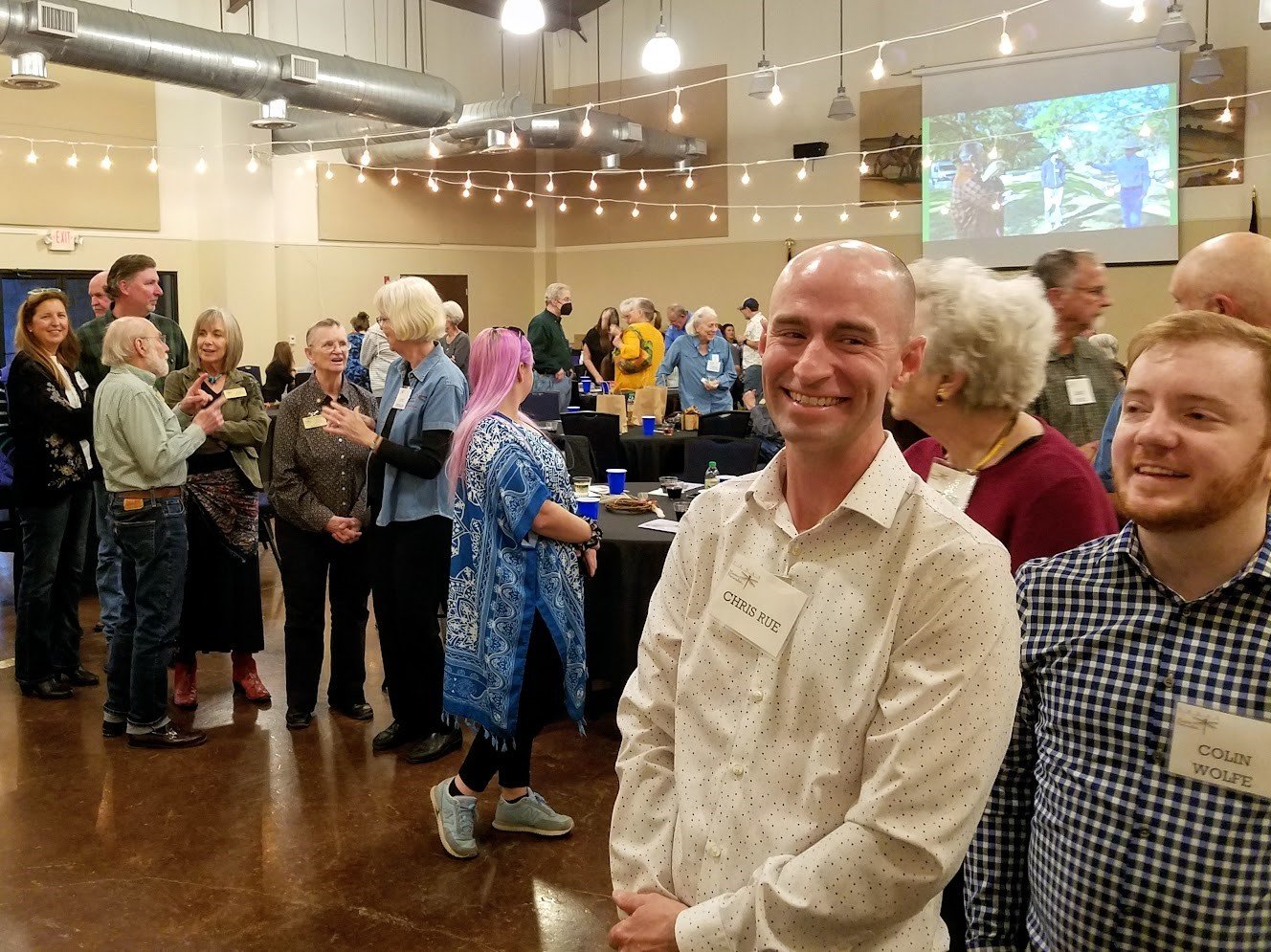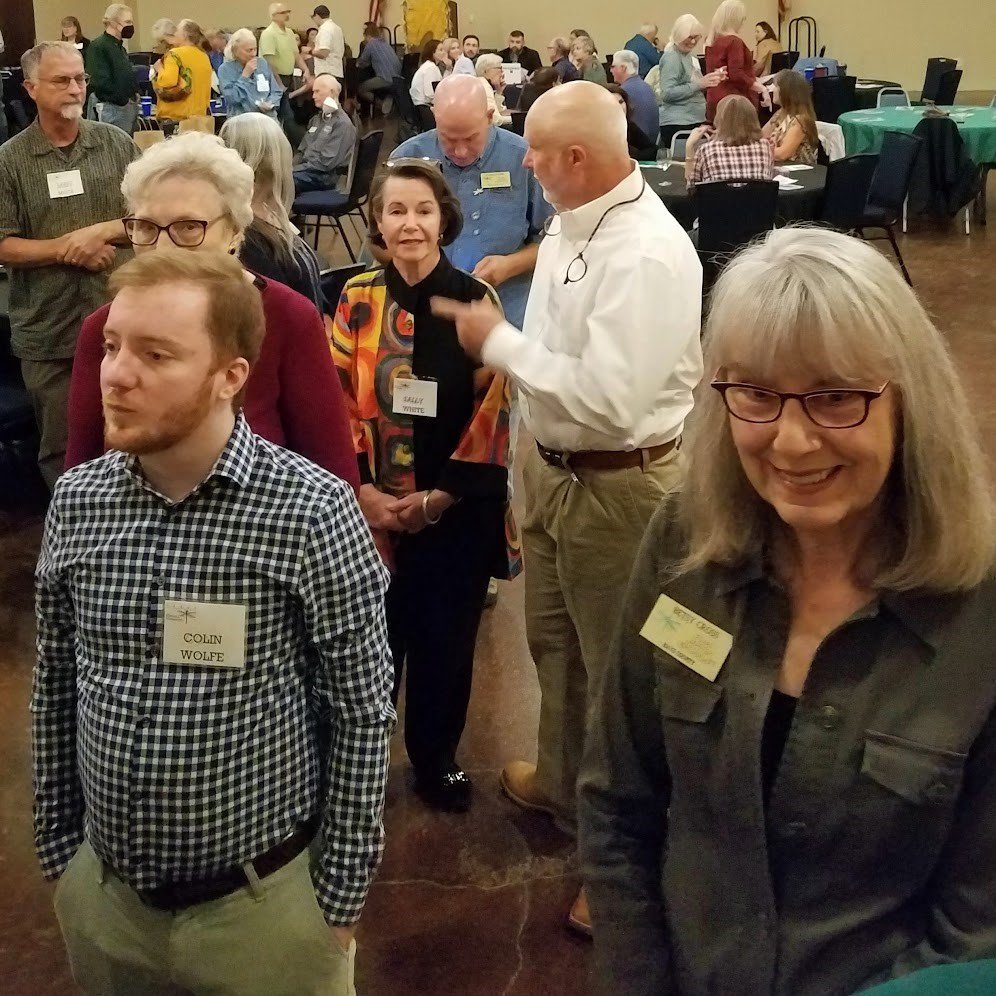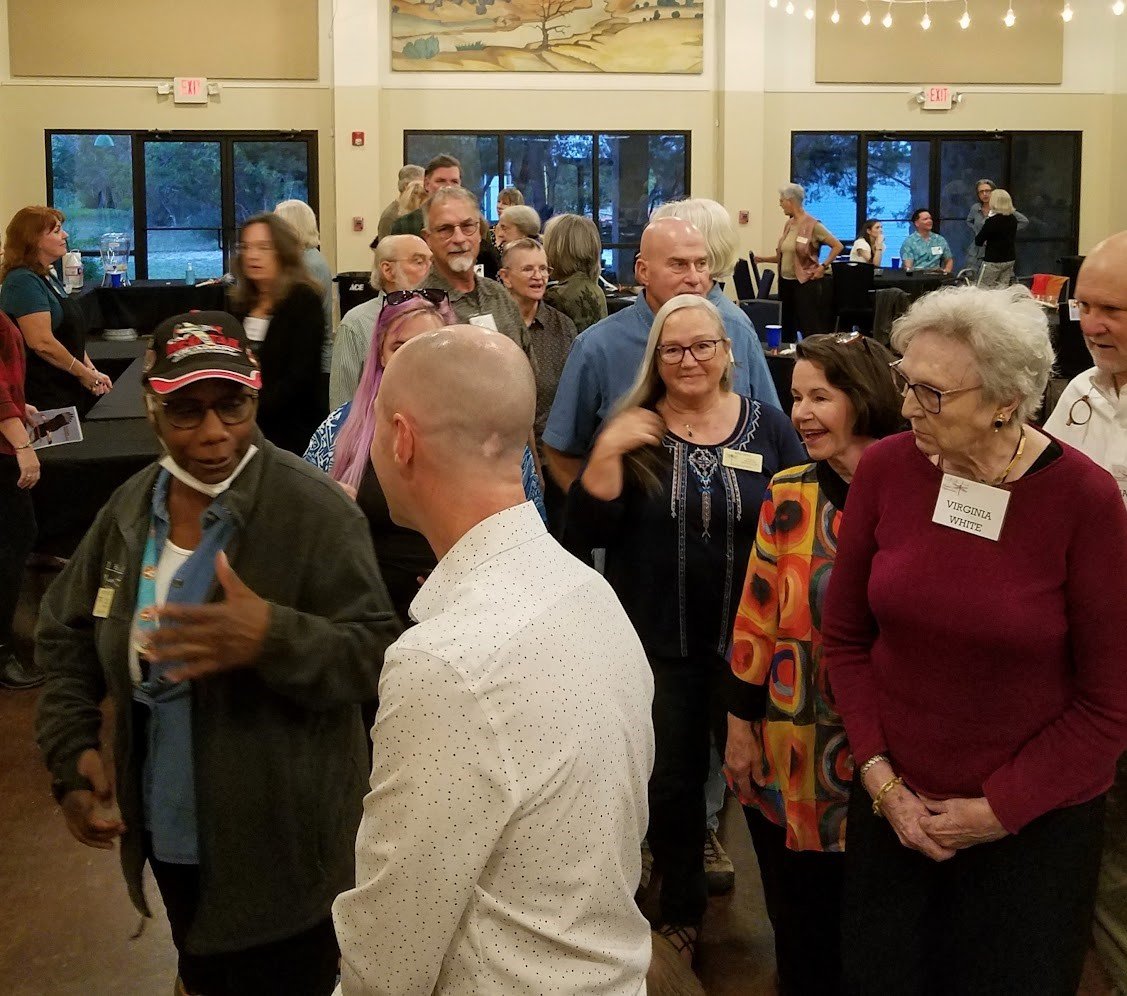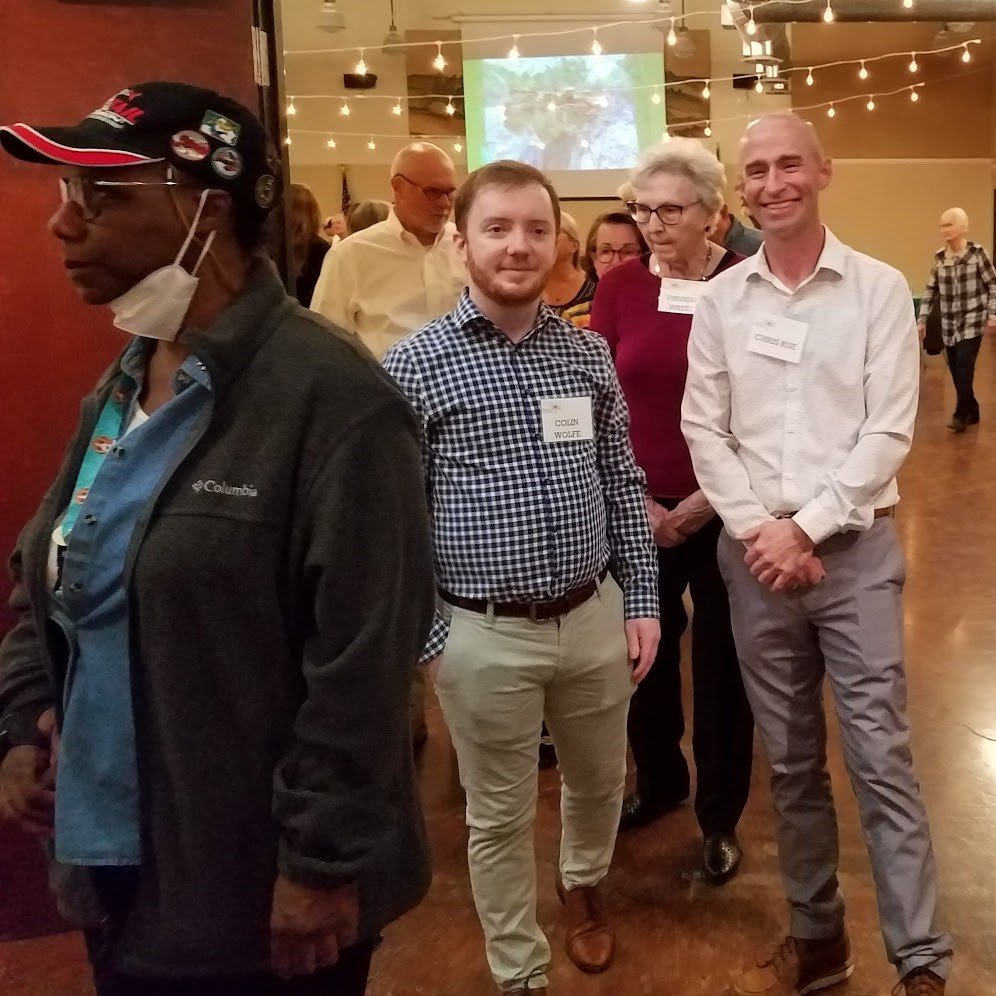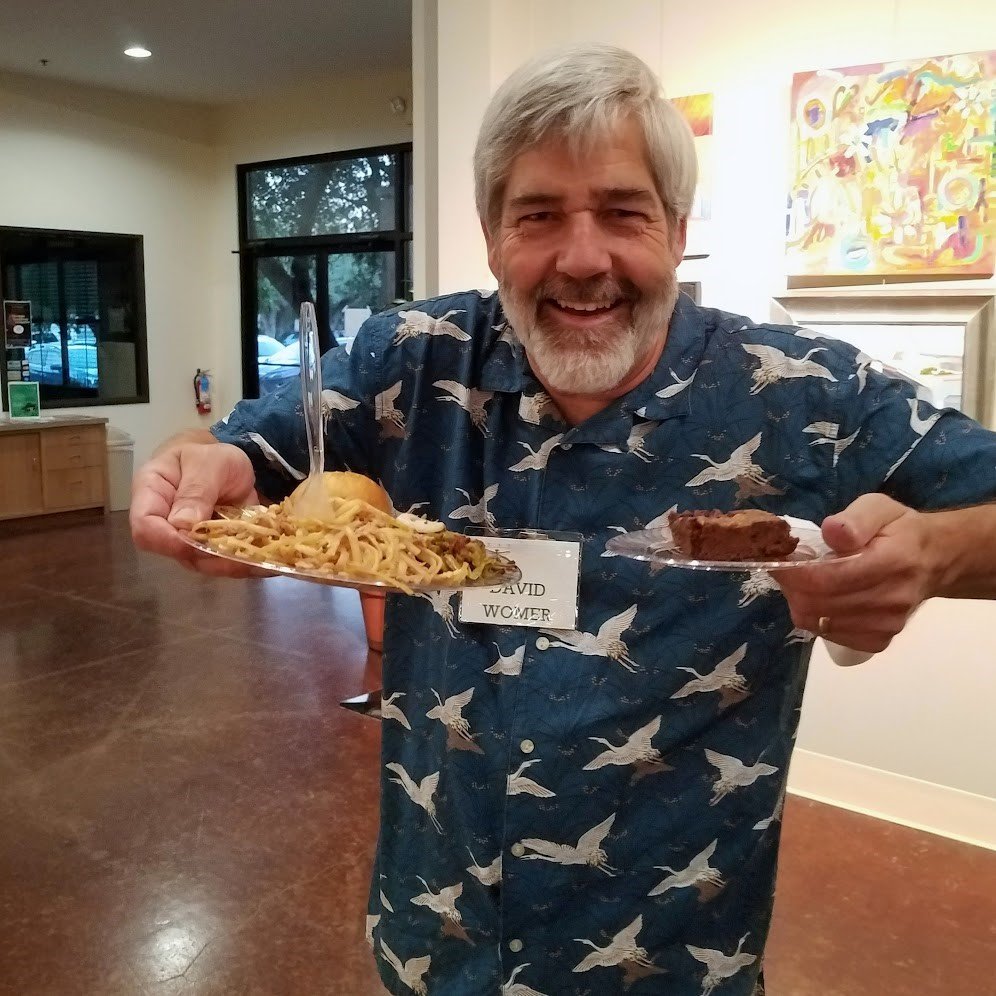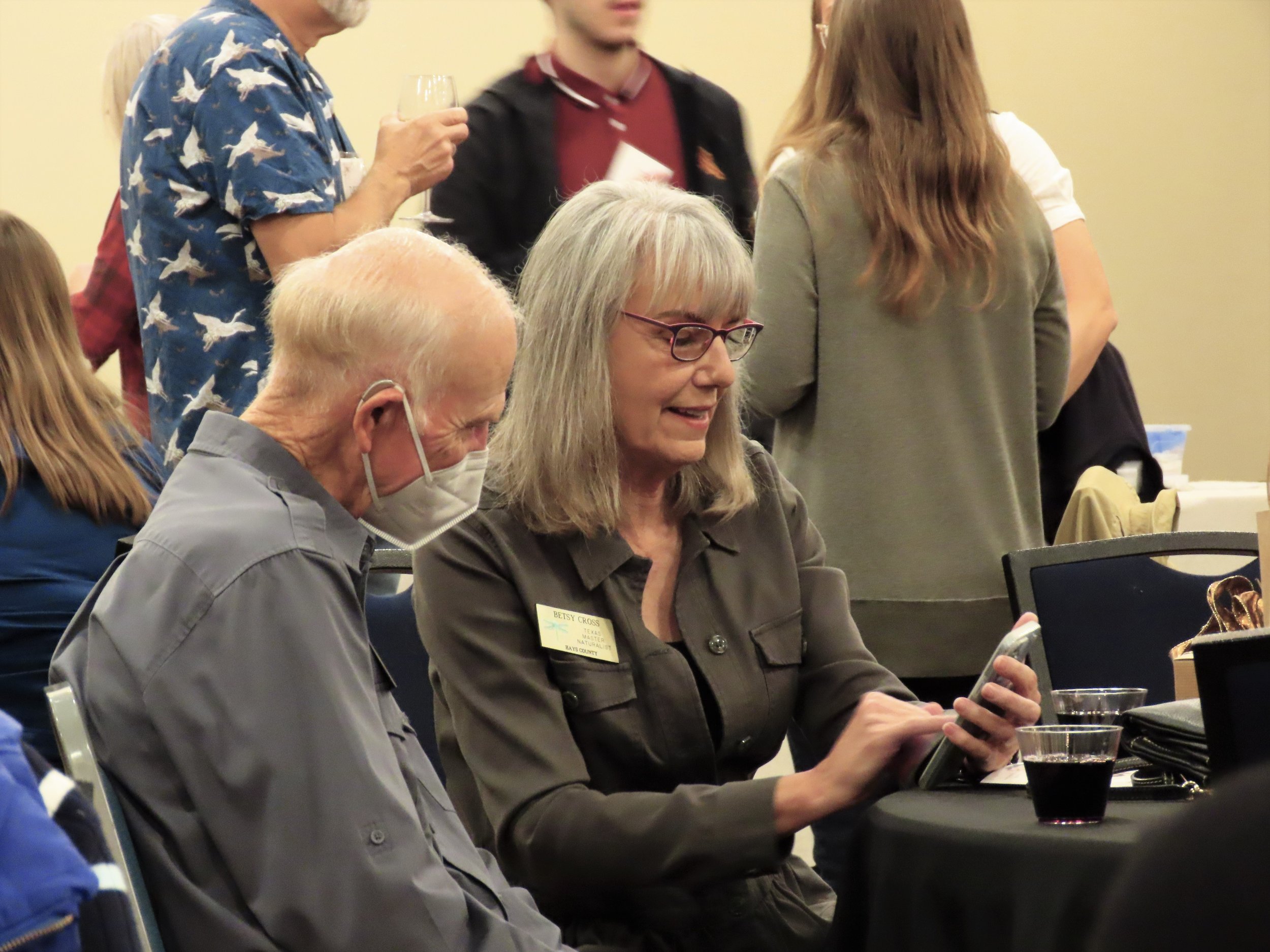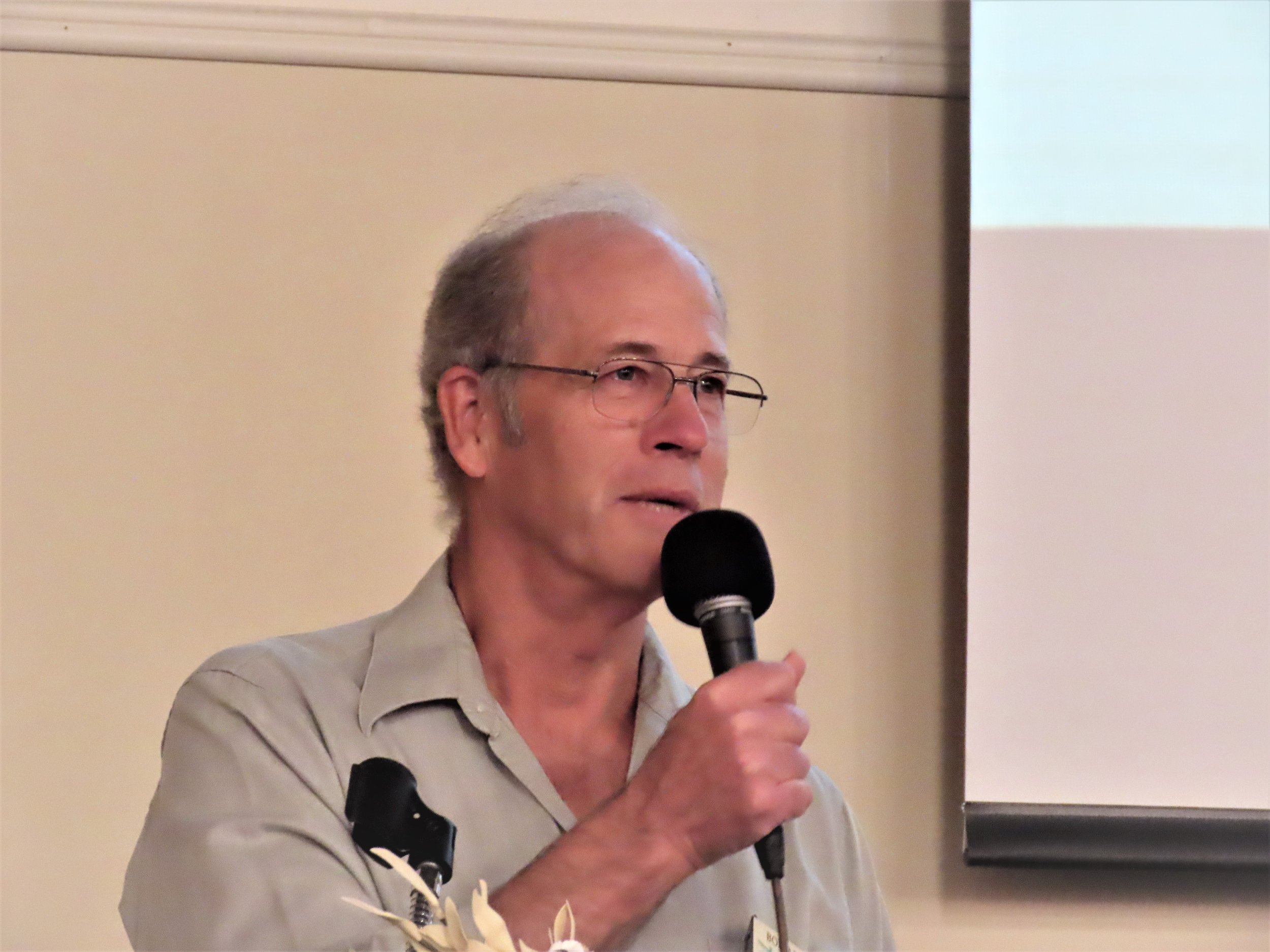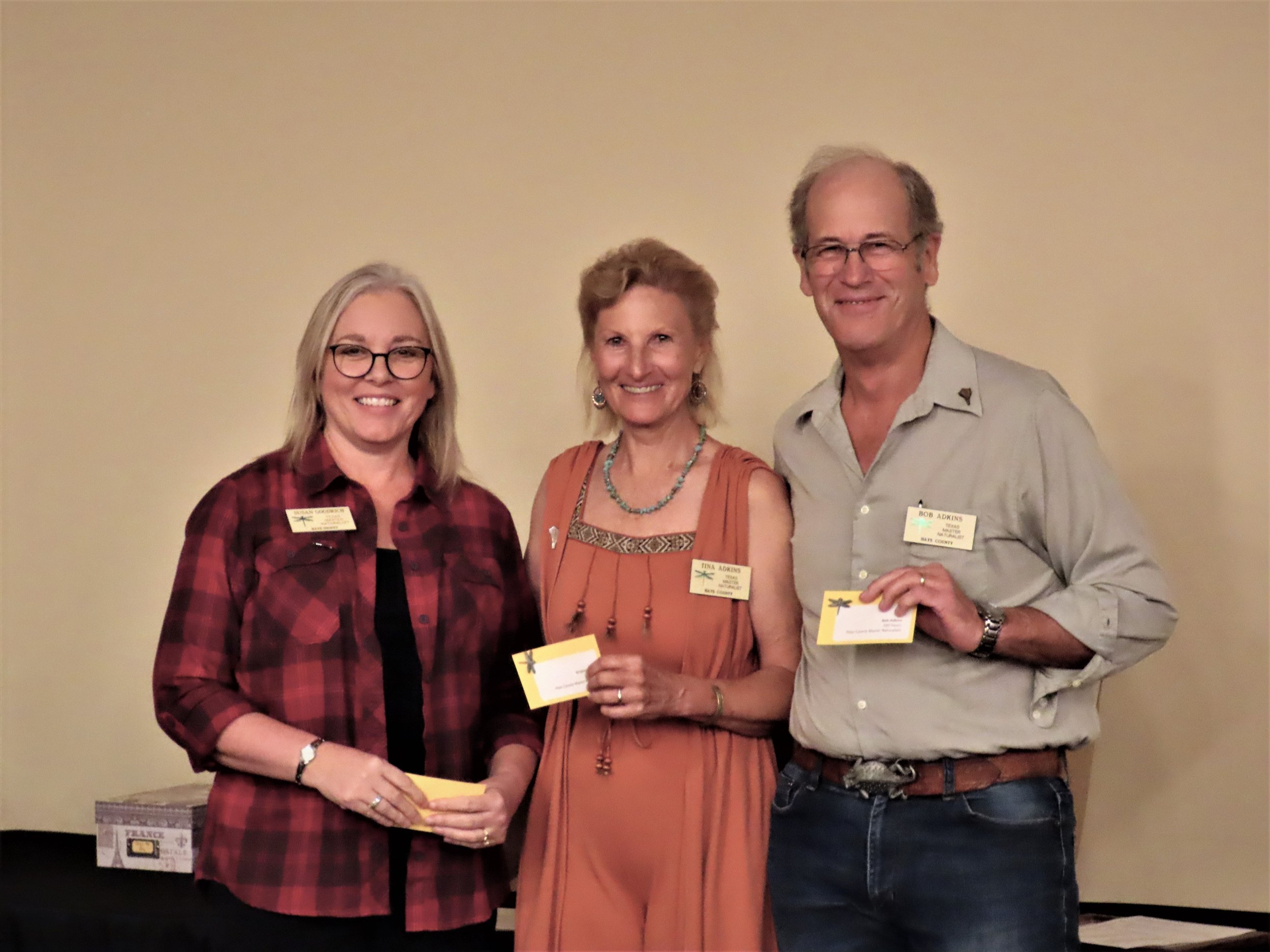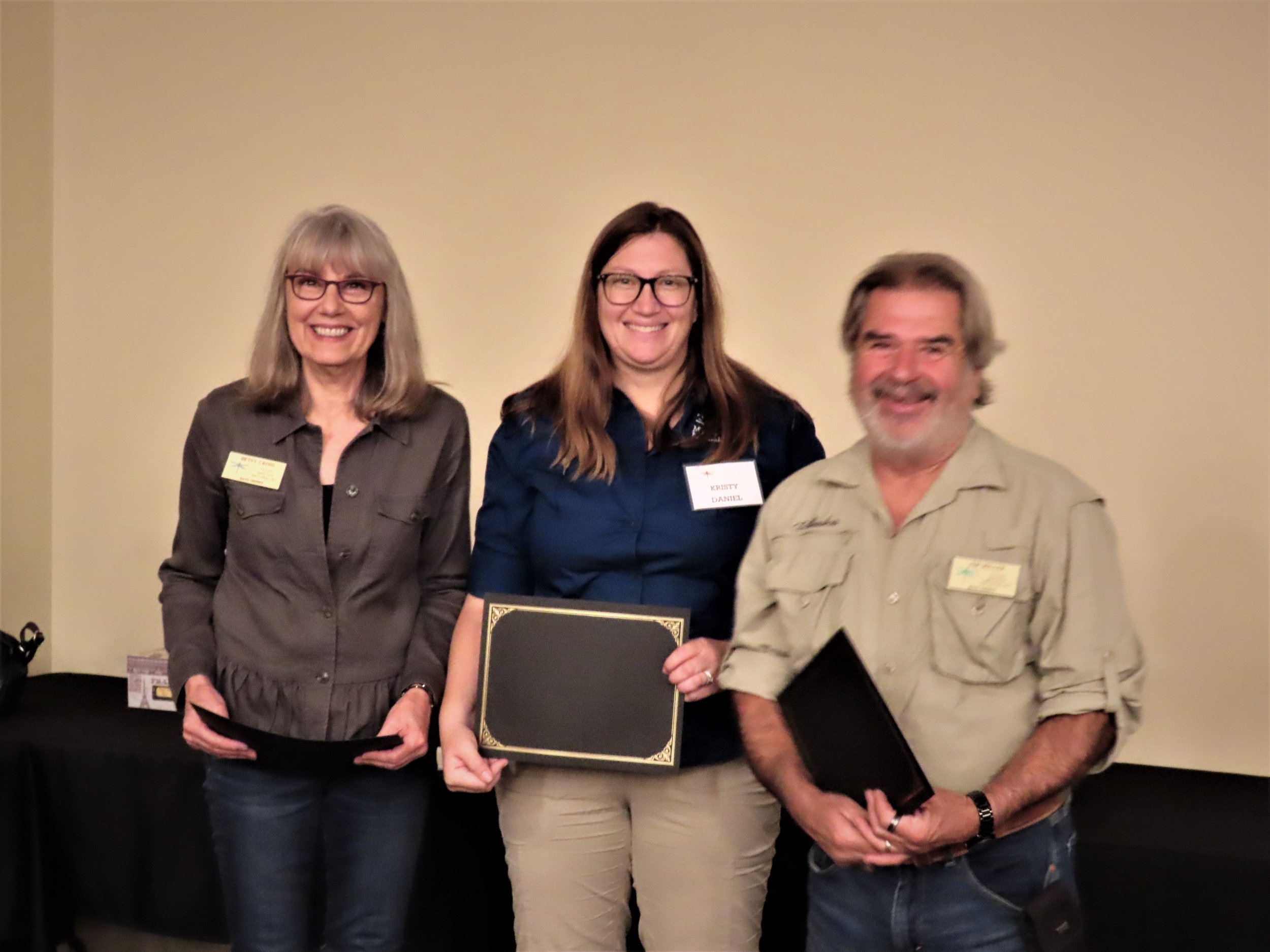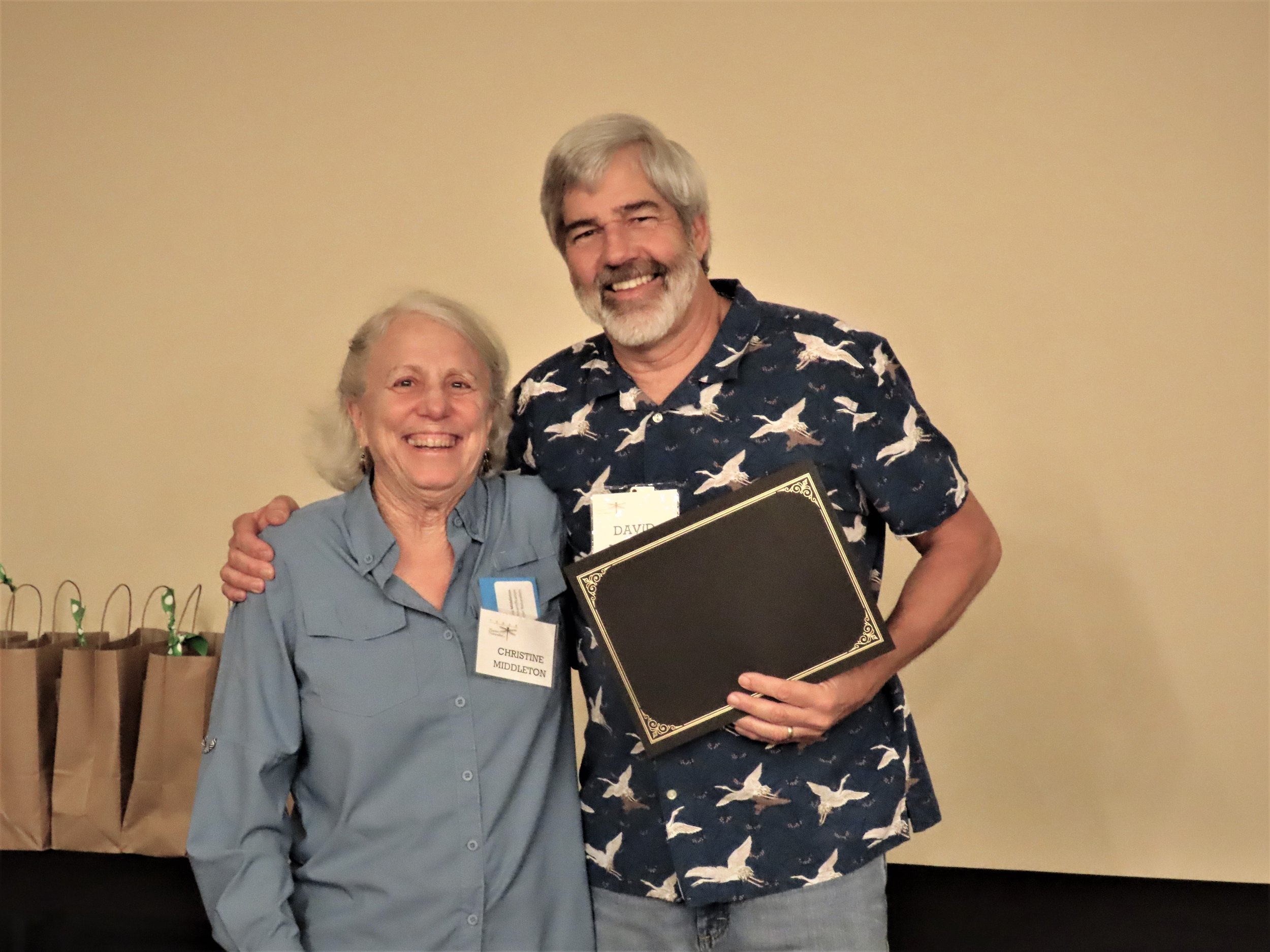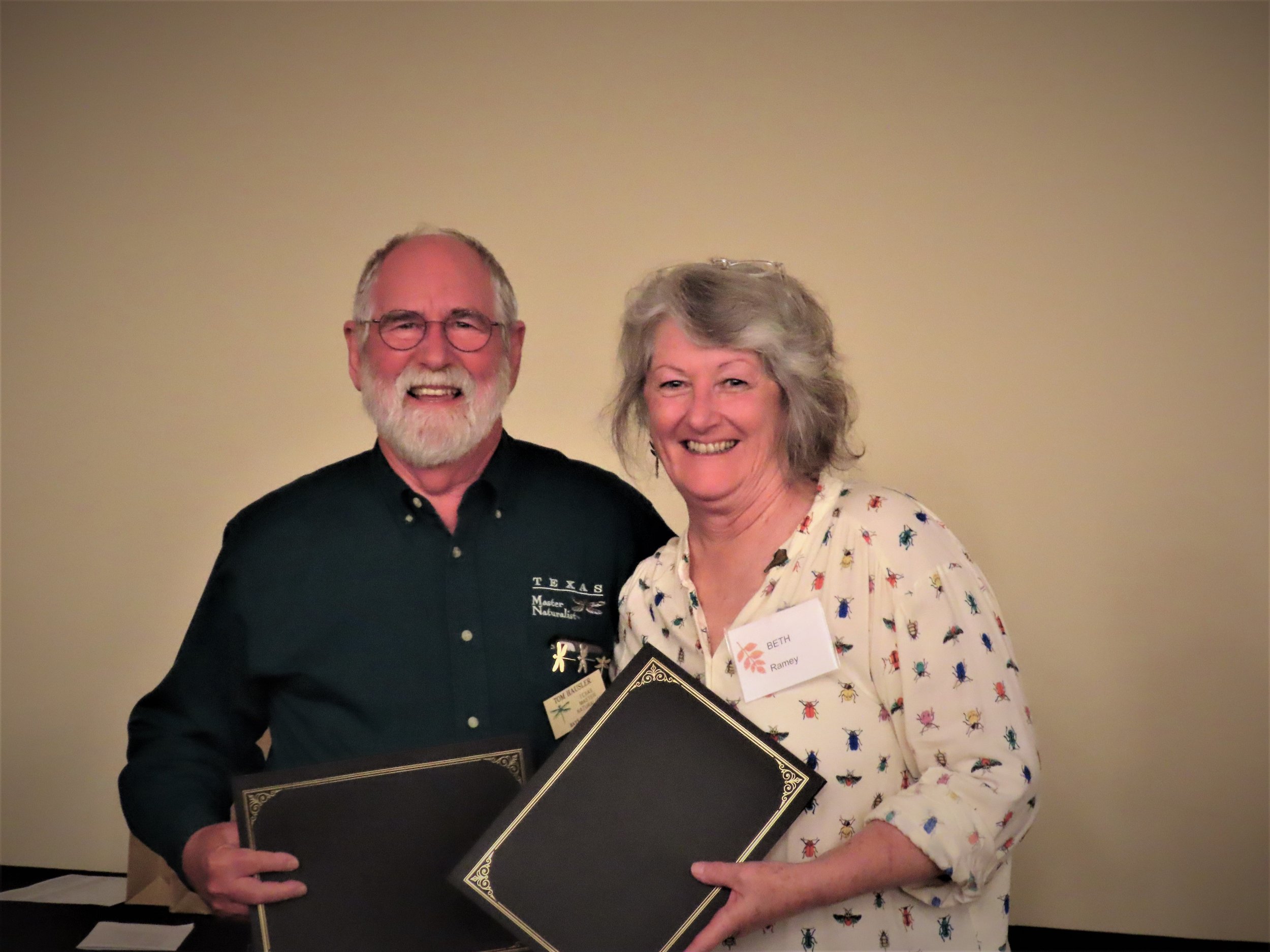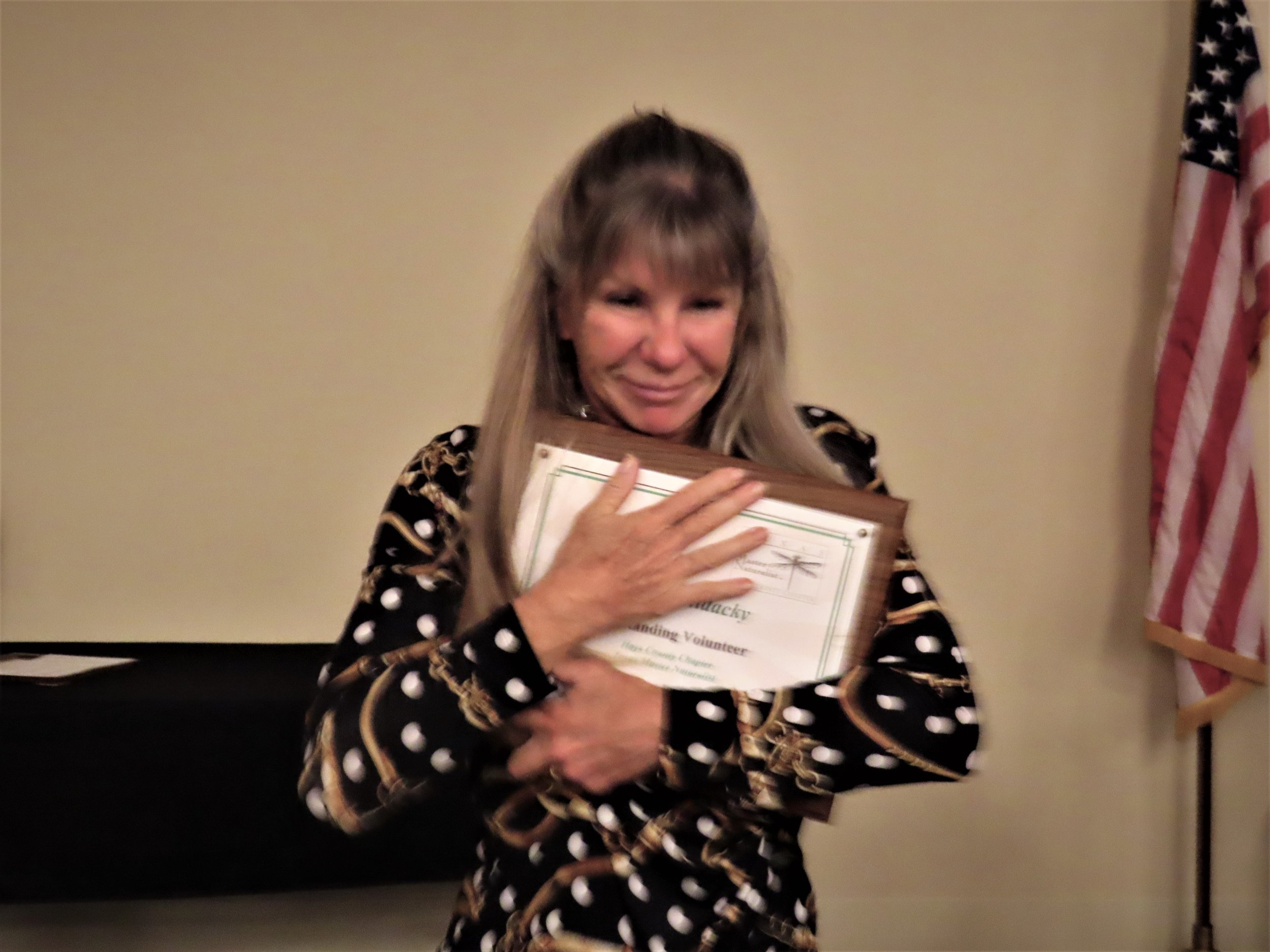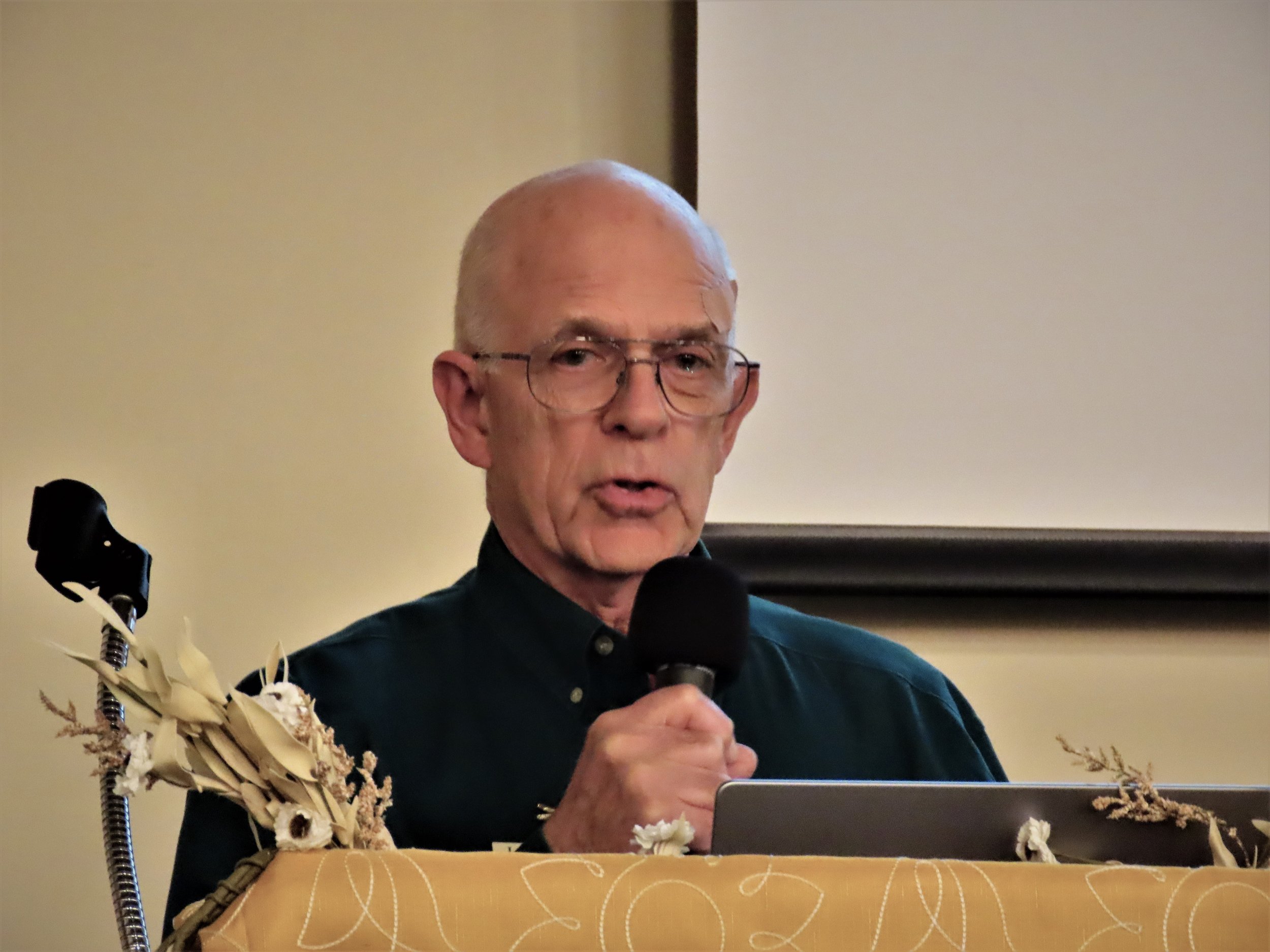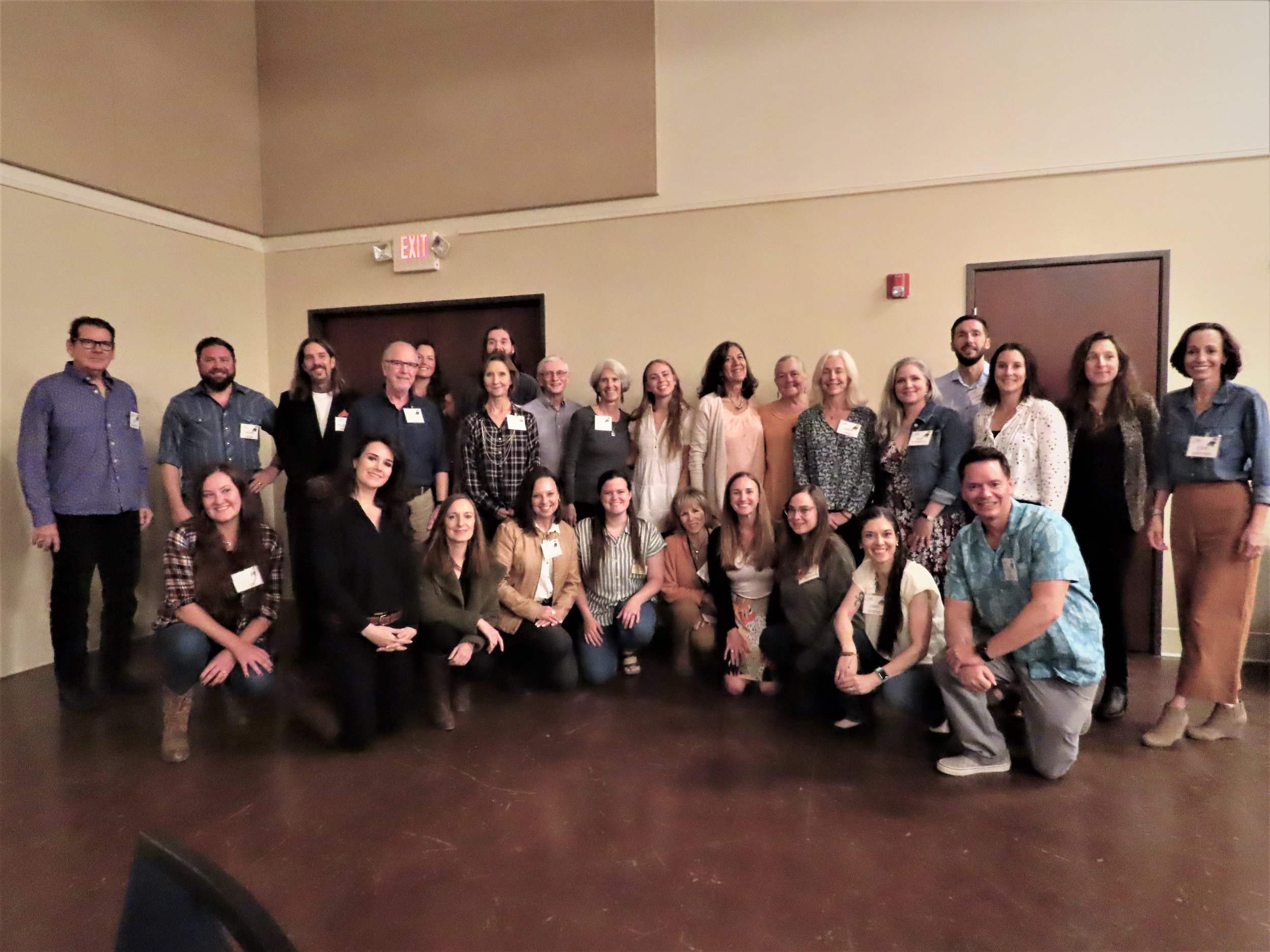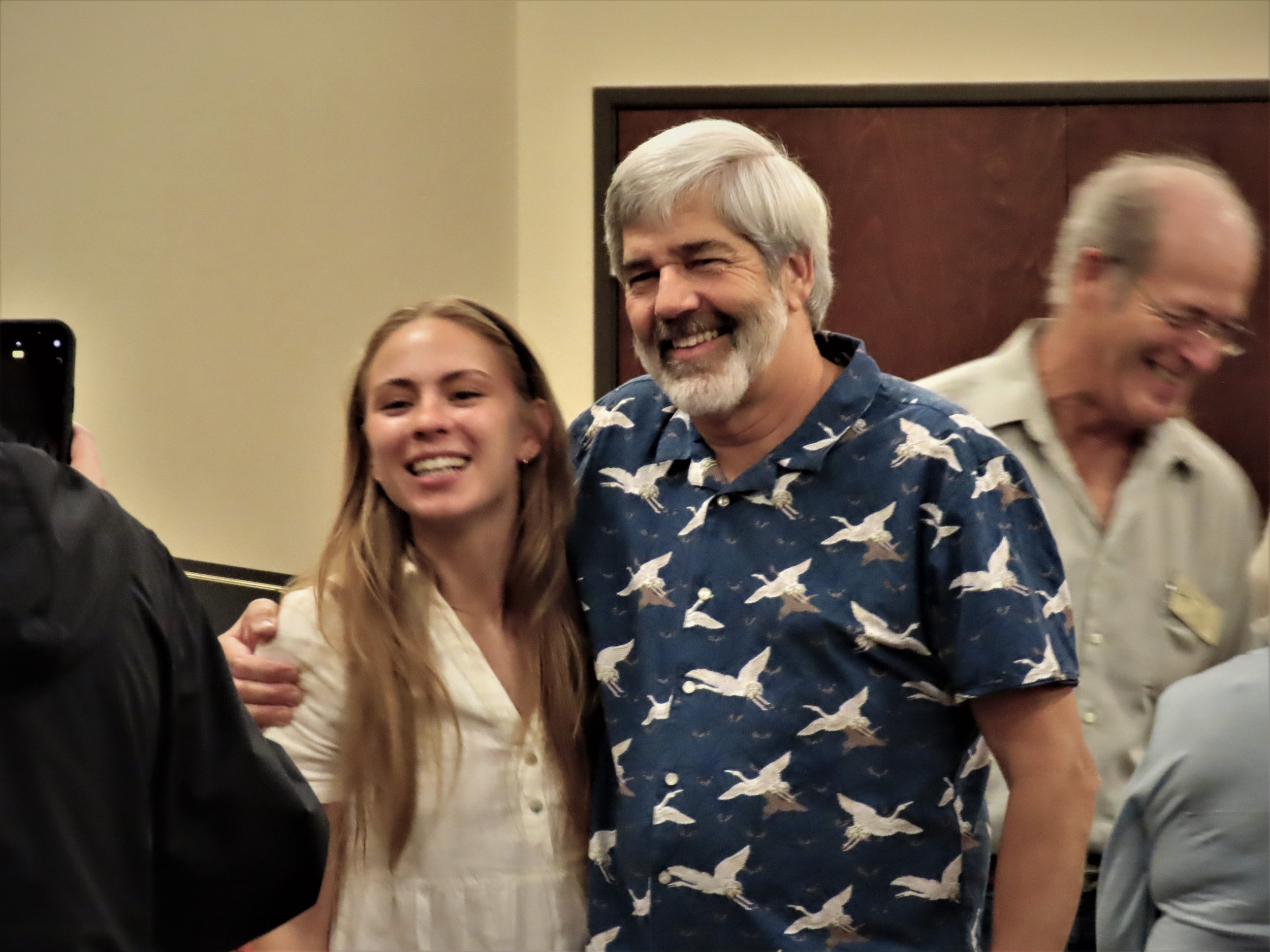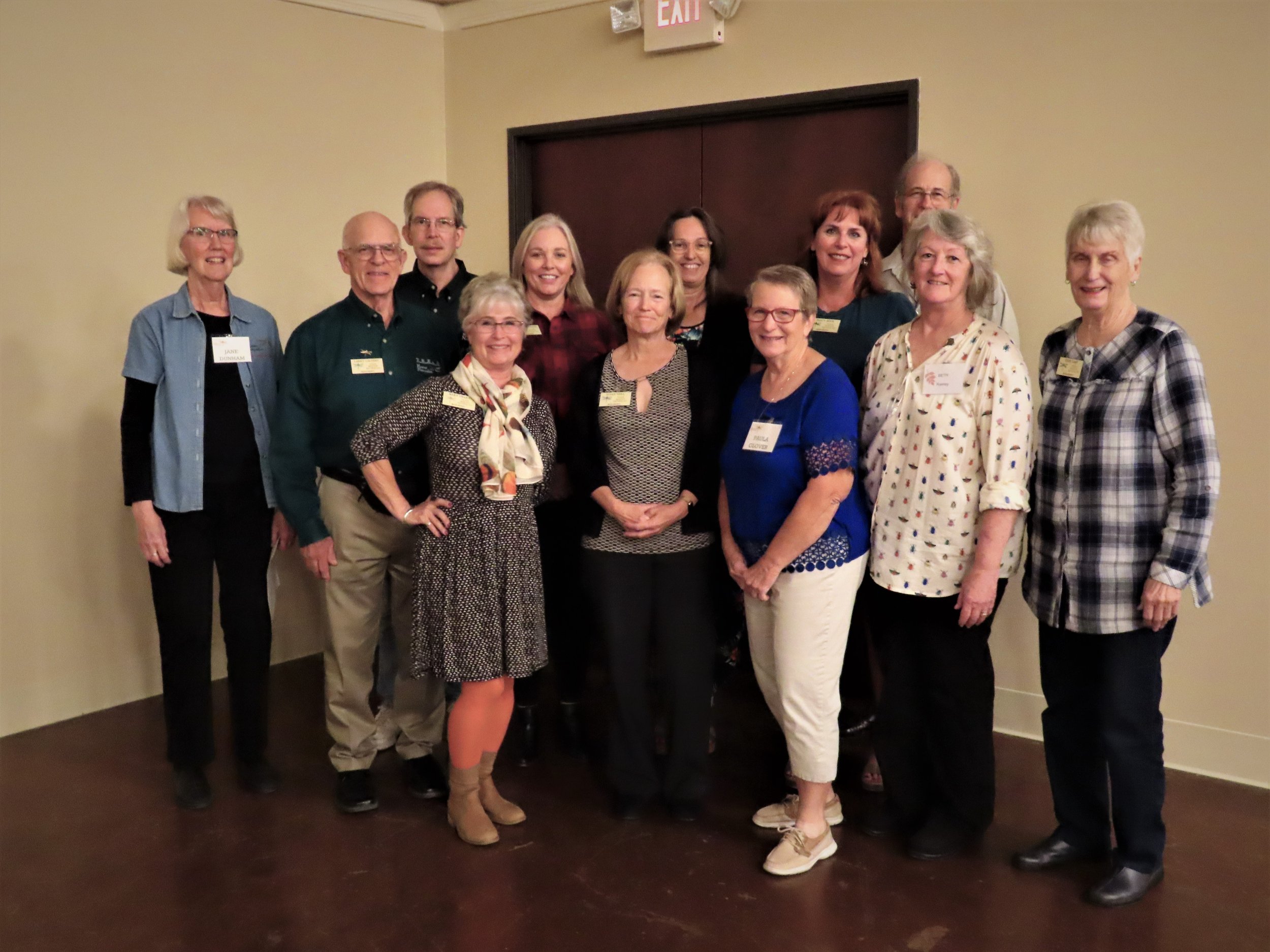The Caracara—A Most Remarkable Creature
Photo: Betsy Cross
Mimi Cavender and Betsy Cross
We warmly welcome the 2022 Hays County Master Naturalist Class of Caracaras!
Hays County Master Naturalist celebrated this year’s Chapter accomplishments and especially its graduating class with the Annual Gala in Wimberley on November 5, 2022. There were celebratory greetings from President Bob Adkins and Board officers and a state level award-winning video by Bob Currie.
Thirty-five trainees completed ten monthly sessions of the Texas Master Naturalist™ comprehensive curriculum, together logged 577 hours of advanced training, and volunteered a Chapter record total of 1,899 hours in the field!
An entire Training Team produces a new crop of Master Naturalists; the Class Director is usually a seasoned MN, equal parts scientist, guru, coach, and parent. It takes a sort of focused joy. But from the obvious affection this Class has for their director, Mary O’Hara, theirs was a perfect fit.
Mary tells us, “This year was refreshing as we finally returned to in-person sessions, which are crucial to the cohesion of a Class.
We added a new field trip location, Honey Creek State Natural Area, to our slate of precious Hill Country sites.
Another first: we added two little naturalists to our ranks. Congrats to the mommas who persevered through pregnancy to become HCMNs.”
And just as every year’s class has a personality, each class has a name. Mary O’Hara, Class of 2015 “Cypress” explains, “The class name, or totem, is chosen every year by the Class itself after they’ve had some time to bond and is often related to a shared sighting or experience. Every trainee is encouraged to nominate a Texas native species, which cannot be repeated from prior years.” There’s some fierce politicking while they vote until a winner is selected. “For years I’ve been hoping that River Cooters [a turtle] would win, but it always falls short!” Introducing this 2022 Graduating Class, Mary officially welcomed them to the Chapter: “You will now and forever be known as…Caracaras.”
It took curiosity, focus, intelligence, and tenacity to become this year’s remarkable new HCMNs. How appropriate that they had named themselves The Caracaras!
So to join in congratulating this talented Caracara class of Hays County Master Naturalists, we’d like to bring you—hold on—
A book report! We excerpt from Unraveling the Mystery of the Caracara by Corryn Wetzel (in Audubon Magazine, April 21, 2021), who reviews a 2021 book, A Most Remarkable Creature, by Jonathan Meiburg, lead singer with the band Shearwater.
Yes, Meiburg is a rock musician and equally passionate ornithologist, whose debut book is “an enrapturing tale about the unfolding evolutionary drama of our planet. A Most Remarkable Creature hinges on the charismatic genus of birds called caracaras, which are related to falcons but look more like a mash-up between a vulture and an eagle.”… The 10 surviving species of caracara inhabit the most varied and extreme corners of South and Central America, with populations reaching into the southern United States…” In Texas to just above the Balcones Escarpment, we see one well-adapted species—the Crested Caracara.
“Charles Darwin, in voyages on HMS Beagle in the 1830s…was intrigued by their inquisitive nature... ‘The most extraordinary thing about caracaras,’ says Meiburg, ‘is their brain. I had never met an animal that seemed so conscious,’ he says. While other raptors have excelled as skilled hunters, caracaras have gotten by on their corvid-like intelligence and scrappy nature. In A Most Remarkable Creature, Meiburg describes teams of Andean Caracaras overturning rocks to find a meal, a captive Crested Caracara that can operate a vending machine, and a Striated Caracara that entertains itself with a piece of string… They don’t act like a falcon is supposed to act.’
“‘People are always confused by hybrid creatures,’ says Meiburg, noting that his passion for music and for ornithology doesn’t exist in isolation. ‘The most exciting moments in playing music are moments of discovery, when something happens you weren't expecting and that delights you,’ he says, ‘and with birds, it's the same.’”
Notice Meiburg’s descriptions of the caracara: remarkable, inquisitive, intelligent, scrappy, cooperative, and—“they don’t act like a falcon is supposed to act.” They’re falcons that look like an eagle but scavenge like a vulture—in other words, smart enough to know how to make good use of every opportunity! The HCMN Caracaras’ Training Team praised 2022’s Class as all those things.
Photo: Tom Hausler
And the science! Here’s Texas A&M’s take on our only resident caracara species. Agrilife Research ornithologist Robert C. Tweit (2007 in The Texas Breeding Bird Atlas) reports that only Crested Caracaras “are resident in Texas and breed from January to September…volunteers found caracaras primarily in grassy areas, such as pastures, farmlands, brushlands, open fields, and golf courses. These habitats often contained or were adjacent to vegetation such as low chaparral, mesquite, cactus, thorn scrub, oak, deciduous woods, elm, ash, cedar, hackberry, and large rose bushes.”
“Pairs occupy and vigorously defend territories year round and usually nest in the highest vegetation or tree-like structure available. The pair may reuse or refurbish an old nest or build a new nest in the same vegetation or structure. Both sexes bring material and help build the well-constructed woven nest, 16 to 26 inches across,…made of sticks, forb stems, grass, and leaves and lined with finer materials, including grass, cotton, and Spanish moss (Tillandsia)…The female usually lays 1 to 4 cinnamon-colored eggs blotched with various shades of brown. Incubation, which lasts 30 to 33 days, is shared by the parents.” Cooperation!
“The young birds leave the nest 7 to 8 weeks after hatching and are fed by both parents for at least another 2 months after fledging. Fledglings may remain in their parents’ territory for as long as 10 months after leaving the nest. Most pairs raise only 1 brood per year.”
Photo: Eva Frost
“Crested Caracaras, in contrast to most other raptors, eat carrion as well as any animal they can catch. They are often seen perched high in a tree or on a fence post or utility pole, scanning for live or dead prey or for vultures descending to a carcass. Early mornings and late afternoons are favored foraging times, and they also search by flying low or walking on the ground. When prey is spotted from the air, they land and walk to it.” With this in mind, we Central Texans stand a good chance of seeing caracaras on our property!
All those behaviors blend traits of falcon, eagle, and vulture. Caracaras have a keen flexible intelligence that makes the most of an opportunity. They’re a well-chosen totem for a most remarkable Hays County Master Naturalist Class of 2022. Good year! (Good party!)
Hays County Master Naturalist
2022 Gala Slide Show
Photos: Mimi Cavender and Eva Frost

